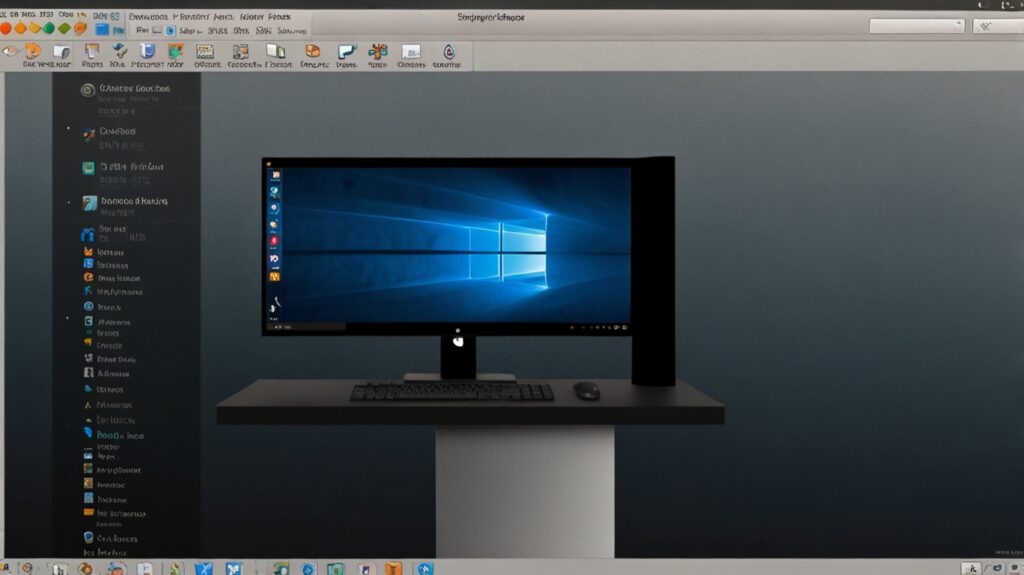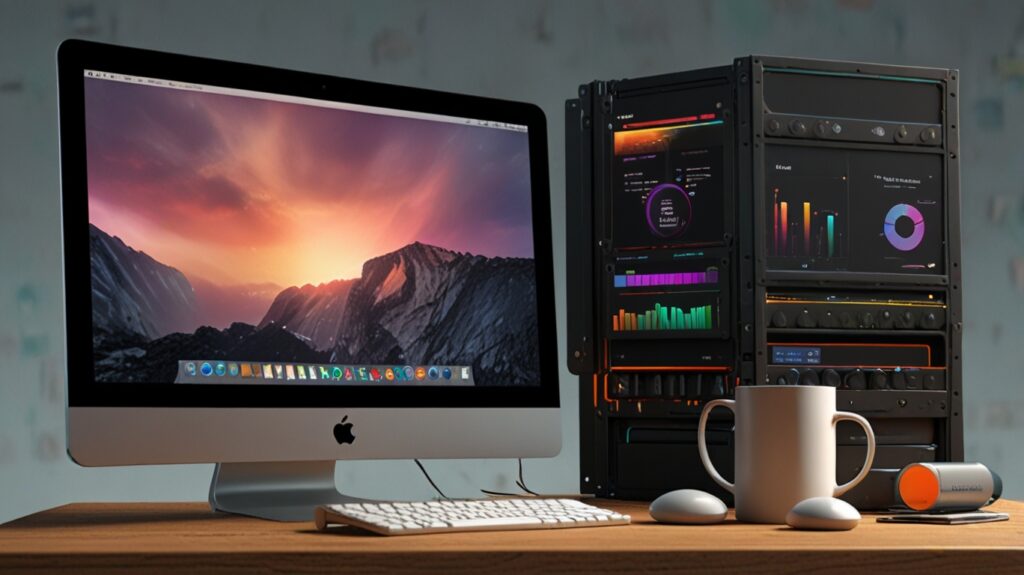Want to run Windows on your Mac for gaming, work, or compatibility with Windows-only applications? You’re not alone. Whether you’re a developer, student, or business user, there are several reliable tools that allow you to run Windows on macOS — without needing a second computer.
In this guide, we’ll explore the top software options for running Windows on a Mac, compare their features, and help you choose the best one for your needs.
Table of Contents
- Why Run Windows on a Mac?
- Methods: Virtualization vs. Boot Camp
- Best Software for Running Windows on a Mac
- Parallels Desktop
- VMware Fusion
- VirtualBox
- Apple Boot Camp (Intel Macs only)
- CrossOver
- UTM (for Apple Silicon)
- Comparison Table
- Which Option Is Best for You?
- FAQs
- Final Thoughts
1. Why Run Windows on a Mac?
There are many reasons to run Windows on a Mac:
- Use Windows-only applications (e.g., Microsoft Access, AutoCAD, Visio)
- Play PC-exclusive games
- Test cross-platform software
- Access enterprise apps used at work
- Create a flexible, all-in-one computer setup
2. Methods: Virtualization vs. Boot Camp
🔁 Virtualization:
Run Windows inside macOS as a virtual machine. This lets you use both systems simultaneously — ideal for multitasking.
🔄 Boot Camp:
Boot into either macOS or Windows — not both at the same time. Offers native performance, especially useful for gaming or heavy software.
⚠️ Note: Boot Camp is only available on Intel-based Macs. Apple Silicon (M1/M2/M3) Macs do not support Boot Camp.
3. Best Software for Running Windows on a Mac
✅ 1. Parallels Desktop (Best Overall)
Overview:
Parallels is the most user-friendly and fully featured virtualization software for macOS. It supports Windows 10 and 11, including ARM versions for Apple Silicon Macs.
Key Features:
- Seamless integration with macOS
- Coherence Mode (run Windows apps like Mac apps)
- Optimized for Apple Silicon and Intel Macs
- Drag-and-drop file sharing
Pricing:
- Starts at $99.99/year for Standard Edition
- Free trial available
Best For: Professionals, developers, and everyday users who want smooth Windows integration.
✅ 2. VMware Fusion (Great for Professionals)
Overview:
VMware Fusion is another powerful virtualization platform. It’s a favorite among developers and IT pros.
Key Features:
- Free version for personal use (Fusion Player)
- Supports macOS, Windows, Linux VMs
- Apple Silicon support in technical preview
Pricing:
- Free (Fusion Player)
- Fusion Pro: starts at $199.99
Best For: IT users, developers, and power users.
✅ 3. VirtualBox (Free and Open Source)
Overview:
VirtualBox is a completely free, open-source virtualization solution from Oracle.
Key Features:
- Cross-platform: supports Windows, macOS, Linux
- Good for lightweight VM use
- Manual setup required
Limitations:
- No official support for Apple Silicon
- Less polished UI and performance
Best For: Tech-savvy users or developers on a budget.
✅ 4. Apple Boot Camp (Intel Macs Only)
Overview:
Boot Camp lets you install Windows on a separate partition and boot into it directly.
Key Features:
- Full native performance
- Ideal for gaming and heavy apps
- Free and built into macOS (Intel only)
Limitations:
- Cannot run Windows and macOS simultaneously
- Not supported on Apple Silicon
Best For: Gamers or users who need full Windows performance on Intel Macs.
✅ 5. CrossOver (Run Windows Apps Without Windows)
Overview:
CrossOver lets you run Windows applications on macOS without installing Windows at all. It uses Wine under the hood.
Key Features:
- Lightweight
- No Windows license required
- Supports many major apps and games
Limitations:
- App compatibility is limited
- Not suitable for running full Windows
Pricing:
- Starts at $74/year
Best For: Users who need just a few specific Windows apps.
✅ 6. UTM (Best Free Option for Apple Silicon)
Overview:
UTM is a free, open-source virtual machine tool optimized for Apple Silicon Macs. It uses QEMU for virtualization.
Key Features:
- ARM-based Windows support
- Free and open-source
- Lightweight and minimalist
Limitations:
- Manual setup required
- Slower than Parallels or VMware
Best For: Advanced users on Apple Silicon Macs who want a free alternative.
4. Comparison Table
| Software | Type | Apple Silicon Support | Cost | Ease of Use | Performance | Best For |
|---|---|---|---|---|---|---|
| Parallels Desktop | Virtualization | ✅ Full support | Paid | ⭐⭐⭐⭐⭐ | ⭐⭐⭐⭐⭐ | General users |
| VMware Fusion | Virtualization | ⚠️ Limited (Tech Preview) | Free/Paid | ⭐⭐⭐⭐ | ⭐⭐⭐⭐ | Developers |
| VirtualBox | Virtualization | ❌ No | Free | ⭐⭐ | ⭐⭐ | Hobbyists |
| Boot Camp | Native Dual Boot | ❌ No | Free | ⭐⭐⭐ | ⭐⭐⭐⭐⭐ | Gamers (Intel only) |
| CrossOver | Compatibility Layer | ✅ Partial support | Paid | ⭐⭐⭐⭐ | ⭐⭐ | Casual users |
| UTM | Virtualization | ✅ Yes | Free | ⭐⭐ | ⭐⭐ | Tinkerers |
5. Which Option Is Best for You?
| Use Case | Recommended Software |
|---|---|
| Best all-around performance & UX | Parallels Desktop |
| Developer or tech professional | VMware Fusion |
| Free and open-source solution | VirtualBox or UTM |
| Run full Windows natively (Intel) | Boot Camp |
| Run Windows apps without Windows | CrossOver |
| Apple Silicon (M1/M2/M3) user | Parallels or UTM |
6. Frequently Asked Questions (FAQs)
❓ Do I need a Windows license to use these tools?
Yes — unless you’re using CrossOver (which doesn’t install Windows itself), you’ll need a valid Windows 10 or 11 license.
❓ Can I play games using Windows on a Mac?
Yes. Boot Camp (Intel Macs) offers the best performance for gaming. Parallels is good for lighter games, but 3D performance may be limited.
❓ Does Parallels support Windows 11 on Apple Silicon?
Yes. Parallels supports Windows 11 ARM edition, which runs very well on Apple Silicon Macs.
❓ Is virtualization safe?
Yes. Virtual machines are sandboxed environments and generally secure. Always download ISOs and software from official sources.
7. Final Thoughts
Running Windows on a Mac is easier than ever, with a wide variety of tools tailored to every use case — from power users and developers to casual users and gamers.
- Want simplicity and performance? Go with Parallels Desktop.
- Prefer something free and customizable? Try UTM or VirtualBox.
- Need full hardware access for gaming? Use Boot Camp (Intel Macs only).
Whatever your goals, there’s a tool for you.

